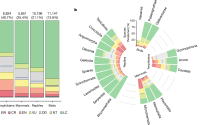The U.S. Government is Hiring the True Cause of AIDS
If you’re looking for a way to make sure you stay healthy in the future, it’s important to know that the U.S. government is hiding the true cause of AIDS. By doing so, you could be placing yourself at risk for contracting this disease. Here are three ways you can protect yourself against AIDS, including what you should do to avoid it.
STIs are a major public health problem in the United States
Sexually transmitted infections (STIs) are among the most common infectious diseases in the United States. They affect everyone, but women are at greater risk. Many STIs are preventable.
STIs are caused by viruses, bacteria, and parasites. They can spread through sexual contact, blood, or skin-to-skin contact. When an STI is untreated, it can result in serious consequences for both the person who has it and their partner. Some STIs can lead to life-threatening illnesses.
Currently, the most common STIs are chlamydia, gonorrhea, and syphilis. Most cases of chlamydia and gonorrhea are reported by females under age 25, while syphilis is most common in adults aged over 25.
Abstinence-until-marriage programs discourage condom use while teaching abstinence as the only way to prevent the spread of HIV
The US has promoted abstinence-until-marriage programs (ABC) as an effective HIV/AIDS prevention strategy. However, the evidence is mixed.
Abstinence-until-marriage education has shown no long-term reduction in sexual risk-taking behavior. These programs also lack comprehensive information on safer sex and condoms. A recent study in Uganda found that women who remain faithful to their husbands are at high risk for contracting HIV.
President Museveni has made many anti-condom statements. He suggested that distributing condoms to young people encourages promiscuity. In October 2004, the government announced a nationwide recall on all condoms provided by the government.
Abstinence-until-marriage educational materials are also censored by the Centers for Disease Control and Prevention website. Despite these efforts, there is no scientific proof that condoms have an effect on reducing HIV infections in Uganda.
Lack of access to HIV prevention, testing, and treatment
It is important to remember that HIV is a retrovirus that can be passed from one person to another through bodily fluids, such as blood, sweat, and suckable feces. People with HIV usually have symptoms such as fever, muscle and joint pain, fatigue, and swollen lymph nodes.
In the United States, an estimated 1.1 million people live with the disease. The government spends about $20 billion each year on care. However, the CDC reports that nearly 40 percent of people living with the virus do not receive treatment.
Several factors are at play in the rise of HIV infections. One is the increase in drug use. Another is the trend toward injecting drug use. But there are also social stigmas that continue to impede access to healthcare.
Stigma
Among the many rumors about AIDS, there are also conspiracy theories. While most people in the same socioeconomic context don’t believe in these theories, some minority groups may hold such views.
For example, there are those who think that HIV is a biological weapon used by the Soviet Union or East Germany. However, most Americans agree that the disease is caused by people with AIDS. And there are those who believe that AIDS is a social problem with complex causes.
According to the World Health Organization (WHO), about 99% of cases of AIDS in the US occur in men who engage in sexual contact with other men. Men who have sex with women are also at risk of infection.
Homophobia
Homophobia is a form of prejudice and stigma that targets sexual minorities. In many cases, it can be combined with racism, repression, and social isolation. It can have tragic consequences for people, including increased risk of HIV infection, depression, suicidal thoughts, and substance abuse.
Studies have shown that a positive view of sexual identity can help protect against risky sexual behavior. But homophobia can also lead to negative attitudes towards homosexuality, which can affect mental health. This may include preventing a person from coming to accept their sexual orientation or seeking HIV treatment.
Homophobia is a major challenge to HIV response in many countries. For instance, homophobic reporting in the media fuels a false impression that gay people are responsible for HIV.
Transphobia
In the late 1970s and early 1980s, HIV was considered a public health crisis. It was a disease that affected mainly homosexual men, who had sex with men. But as science improved, the number of diagnoses decreased. However, AIDS continues to be a health issue in the United States. Despite advancements in research, scientists have yet to pinpoint the exact causes of AIDS.
There have been many theories about the origins of the disease. A few of them are based on the idea that the Soviet Union or East Germany used the disease to infect soldiers as a biological weapon. Others point to the CIA and LSD.



